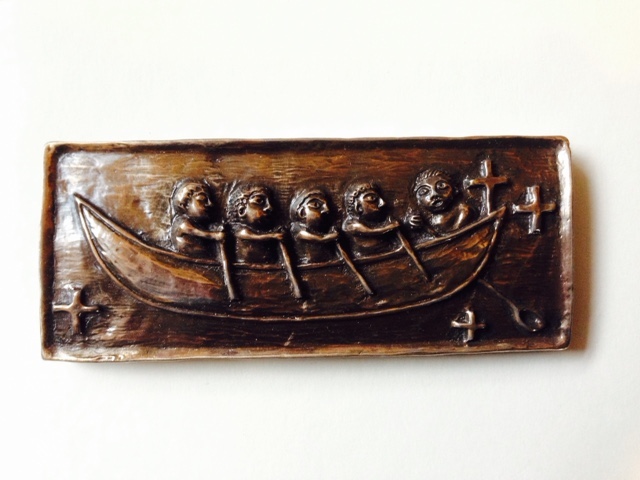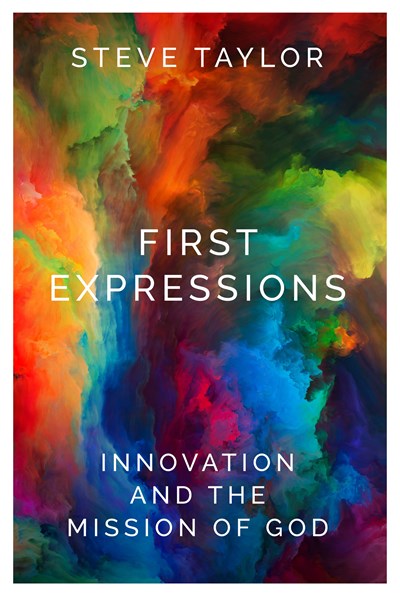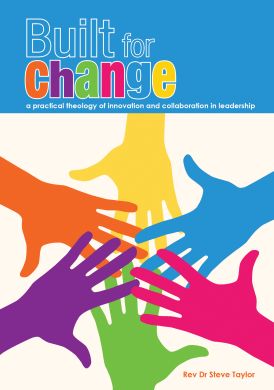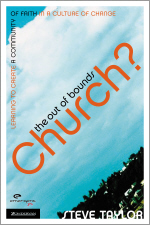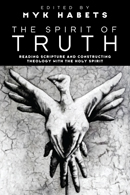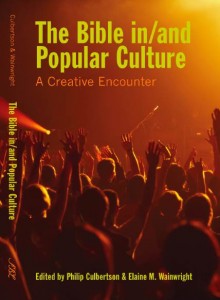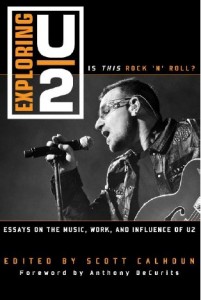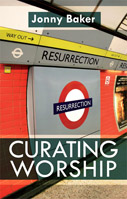Monday, September 14, 2015
Last Cab to Darwin: a theological meditation on outback place
Monthly I publish a film review for Touchstone (the New Zealand Methodist magazine). Stretching back to 2005, some 90 plus films later, here is the review for September 2015, of Australian film, Last Cab to Darwin.
Last Cab to Darwin
A film review by Rev Dr Steve Taylor
Last Cab to Darwin is a visual introduction to contemporary Australian stereotypes. Indigenous men drink and fight. White fella Australians drink and fumble emotionally. English women tourists are blondes willing to sleep around.
Death strides into the midst of these caricatures. Rex (Michael Caton), a taxi driver from Broken Hill, is diagnosed with terminal cancer. With three months to live and afraid of hospitals, he hears of Dr Farmer (Jacki Weaver), advocating in the Northern Territory of Australia for the right to euthanise.
Last Cab to Darwin is based on a true story, including the gaps in Australian law between Territory, State and Federal parliaments. It offers the potential to dwell in complexity. The reality is that the road trip genre becomes an excuse to speed past rich cultural complexity.
Driving his cab to find Dr Farmer, Rex encounters Tilly (Mark Coles Smith), who proceeds to fight and drink his way with Rex toward Darwin. Their narrative journey is broken by a set of clichés, including watches that stop, feral cats hung from outback trees and Tilly’s salvation through sport, if he can beat the bottle. Speeding toward yet another stereotypical scene (Darwin sunsets), Tilly has a one night stand with English barmaid, Julie (Emma Hamilton), who wraps herself into their journey. These images, of indigenous men, white fella Australians and blonde English women tourists simplify the complexity that could ennoble Australia today.
I refer to the lens through which the outback is viewed. The desert landscape depicted in Last Cab to Darwin is simply a dusty red backdrop through which visitors pass, collecting experiences on a road to somewhere. There is no sense of another story, of “anhangha idla ngukanandhakai,” the indigenous (Adnyamathanha) understanding of living in memory.
This understanding of outback is beautifully depicted in the recently published Yarta Wandatha. It is a rarity, a theology book with colour photographs of outback landscape. Unlike Last Cab to Darwin, these scenes are never backdrop on a trip to somewhere. Rather, each is story, around which memory is wrapped. Interpreted in Yarta Wandatha by indigenous woman Denise Champion in creative dialogue with the Christian story, we find the unfolding of a very different outback story.
Last Cab to Darwin introduces two indigenous women. Polly (Ningali Lawford) is Rex’s neighbor, having an affair they are both scared to make public. Sally (Leah Purcell) is Tilly’s wife. The movie provides stereotypical similarities of these indigenous woman. Both are abandoned by their menfolk. Both approach conflict by shouting angrily at those they love.
Such is the simplicity of stereotype. In contrast, when Denise Champion tells the story of Awi-irtanha, the Rain Bird, we encounter a more complex story, in which indigenous resources, considered in light of Jesus, avoid the ugly consequences of unresolved conflict.
Watching Last Cab to Darwin I kept waiting for the road trip to engage these stories on the road between Broken Hill and Darwin. The only hint is when Tilly locates Sally’s mob as fighters against colonial invasion. Once again, 40,000 years of rich and storied memory is lost, replaced by the stereotypes of recent arrival.
Rev Dr Steve Taylor is becoming of Knox College for Ministry and Leadership, Dunedin. He is the author of The Out of Bounds Church? (Zondervan, 2005) and writes widely in areas of theology and popular culture, including regularly at www.emergentkiwi.org.nz.
Wednesday, August 26, 2015
Wanted: Director of Missiology
This was my old job – with a nice twist – church engagement! The last two applicants have been Kiwi’s. Third time ….?
Director of Missiology
Uniting College and Mission Resourcing South Australia together partner in mission. We are seeking a lecturer and leader to develop missiology within the life of both the Uniting Church in South Australia and the College. This will involve forming leaders, educating in its best and broadest sense and fieldwork participation in applied missiology projects. Tasks will include:
1. Developing the Uniting College missiology stream at under-graduate, post-graduate and VET level
2. Lecturing in areas of missiology, contextual mission and innovation
3. Providing research leadership in missiology, including supervision at post-graduate level and connecting research with community stakeholders
4. Working strategically with Mission Resourcing to support and develop mission projects among congregations, communities, regions and networks
5. Strengthen pioneering and fresh expressions as contextual mission
6. Participate in the life of the College, including the formation of leaders in mission
The successful applicant will have a unique skill set that should include experience in education and formation, leadership skills in mission, community mission experience, post-graduate qualifications and an ability to innovate within the faith and polity expressed in the Basis of Union of the Uniting Church in Australia.
A position description is available from: either Steve Taylor, Principal Uniting College, 34 Lipsett Terrace, Brooklyn Park, SA 5032, steve.taylor@flinders.edu.au or Amelia Koh-Butler, Executive Officer, Mission Resourcing, 212 Pirie Street, Adelaide SA 5000, akoh-butler@sa.uca.org.au
Applications close 5 pm, 8 September 2015, with interviews Wednesday September 23 and expected commencement at the beginning of Semester 1, 2016.
Tuesday, July 28, 2015
Creative renewal through action
I’m speaking this Friday, 6 pm, 31 July, Burnside Uniting Church. Here’s the blurb
Rev Dr Steve Taylor is a world leader in missional thinking and sadly is leaving Australia to return to New Zealand in
August(September actually) this year. We are indeed very fortunate Steve has agreed to lead our next metro Gathering teaching sessions.Creative renewal is only possible through action. What actions lead to renewal?
I will be reflecting on leadership lessons from my years as Principal at Uniting College and offering some reflection on the Uniting church into the future. (If I can find the words. I’m still quite unclear on how I want to say what I want to say.)
Friday, July 03, 2015
Why write?
Today is a second day of study leave, a few days in which I am seeking to write about, and reflect upon, my learnings in leadership from recent years of ministry.
 I am in the Blue Mountains, surrounded by bush and quiet. I am staying with my supervisor, who continues his delightful ministry of naming reality, asking provocative questions, helping me circle around my worlds, both inner and outer.
I am in the Blue Mountains, surrounded by bush and quiet. I am staying with my supervisor, who continues his delightful ministry of naming reality, asking provocative questions, helping me circle around my worlds, both inner and outer.
The Old Testament lectionary reading for today, and in particular four phrases, proves strangely clarifying.
I will stand at my watch-post
Write the vision
Make it plain
So that a runner may read it.
Let me explore these phrases from the bottom back up to the top.
I write for a person. A runner. For individuals and teams, whether wondering, willing, or wanting, running the journey of innovate. I write that they might run sustainably, strategically. I want to offer them some signs that point to processes of innovation that have reality, integrity, creativity and a deep compassion and care for people and places.
I write with a purpose. I seek to avoid fancy words, clever theories and quick quotes from leadership heroes. Instead, with honesty and integrity, I want to make as plain as possible the real life learnings from innovation. I want to share stories that offer hope. Organisations do change. People do grow. Resources can be aligned. Access can be enhanced.
I write by choosing to stand at the watchpost. Rather than look forward, rather than theorise, I choose to look back, to particularise. In standing, I find myself slowing and as I slow, I feel once again the particular emotions, demands and experiences of leading an organisation in a complex system in a rapidly changing world. It is hard to stand. It is hard to lead. It is costly to innovate. Yet such is the place from which these words, these leadership learnings, must emerge.
I stand.
Saturday, June 20, 2015
Freedom to pursue not a formula to follow
This week I’ve been teaching an intensive, Mission and the church. It has been an exhausting week – intensives by their very nature are demanding. At the same time, it has been a very fulfilling week. Nearly half the class was from inter-state and it was a joy to be resourcing the church nationally. All of the class had significant ministry experience and thus it became not an exploration of theories for when people might move into ministry, but an intensely practical examination of what could be done now, in living communities. It is a privilege to opens a space and keeps alive a conversation about mission.
My intention is that the conversation is
- hopeful – in the midst of church decline and structures that stifle, to keep providing ways to subvert and maintain
- storified – if God is going ahead of us, if missio Dei is for real, then alongside theory of mission needs to be stories of God’s activity and action
- contextual – theory and stories need to be told in ways that allow people to contextually adapt and innovate, not photocopy. Never once did I hear “oh, we couldn’t do that,” which is a sure sign that contextual has been lost from a teaching context
- creative – whole church, with our whole bodies, embodying the Gospel, needs to be modelled in the course delivery. All these senses need to be engaged, not just the ears and eyes
- evidence-based – stories of God’s activity are the evidence from which we discern mission. Three of the 8 sections featured post-graduate research which was studying stories, in order to discern. So time and again we found ourselves immersed in learnings from people coming to faith, communities exploring innovation 10 years on, churches planting community ministries.
The feedback has been enormously positive.
An email:
Thank you again for a great short course on mission, and the church’s place in it. It has given me, and my congregations, much inspiration to live and work to do, and enjoy.
A final comment.
“I’ve gained a freedom to pursue, not a formula to follow.”
As always, I gain as much as I give in these conversations. On Thursday, as I shared some of my research of sustainability and fresh expressions (2 of the 8 chapters I’ve drafted), I found new insights emerging. It is a project I’m struggling to nail, unsure how to tell the story. As the class questions rained down upon me, I found myself making some fresh connections (and kicking myself that I’d forgot to record this section). All an important part of my own processing and clarifying.
Wednesday, June 17, 2015
Writing in Australia: a missiological analysis
During my time in Australia, I’ve had 26 pieces of writing published. This includes 13 book chapters; 2 peer reviewed journal articles; 3 book reviews in peer reviewed journal; 7 other pieces including 3 in Australian Leadership. It totals to over 80,000 published words in the 5 years.
(I have also completed work on a number of rejected journal articles and work on two book manuscripts in relation to sustainability of fresh expressions.)
In preparing for the Mission and the church course, I decided it would be interesting to analyse this published-in-Australia writing from a missiology perspective. It would test the frame of this course, the seven practices. It would also be a way of letting the frame test my work. Am I covering all the areas of mission or am I narrowcasting?
I was (pleasantly) surprised to find that my writing covers all seven areas. I have written most about the planting and forming of new ecclesial communities and least about evangelism. (although I do spend a lot of time talking about evangelism with certain PhD candidates!) Four of the pieces do not fit the frame and I want to think further therefore about whether the frame might need some adaption.
Prayerful discernment, listening – 3
Apologetics – 2
Evangelism – 1
Catechesis – 4
Ecclesial formation – 4
Planting, forming new ecclesial communities – 6
Incarnational mission -3
Unplaced – 4
This exercise thus becomes helpful in guiding my ongoing research. I need to pay more attention in the next phase to apologetics and evangelism. Overall, the pieces include a degree of engagement with indigenous voice, but less engagement with Pacifica cultures. Again, doing this overview of my work helps clarify for me my ongoing research.
On the course website, I have provided an annotated bibliography of this writing. Over the next few days, I will be adding a brief summary of each piece. I will also provide a second paragraph, explaining the missiological reasons why I wrote it and what were the missiological questions that I was seeking to engage with.
This resource sits alongside a standard class bibliography. That was representative of global voices. This is one voice. Most of these pieces I have written do not provide a neat overview of learning to date. Instead, they are more at the edge. They are seeking to address questions I think need to be answered in moving mission thinking forward. This includes the fact that many of my pieces involve engagement with contemporary popular culture and from these emerge conversations about various practices of mission.
The full bibliography is as follows: (more…)
Saturday, June 13, 2015
We’re all men: gender in teaching mission
Monday I begin a four day intensive, teaching on Mission and the church. Much of this week has been spent building the online site – loading up readings, video clips, extra resources, web links – that will enhance the educational experience.
introduction to Mission and the Church from steve taylor on Vimeo.
Glancing at the class list yesterday, I shook my head in disbelief. The entire cohort, all 9 of the enrolled students, are male. And, if the surnames are in any way reliable, all white fella.
I can’t recall teaching an all male, white fella class. Ever. Certainly not in my experience in the Uniting Church, where one of the things I have most appreciated is the greater gender mix that is present, compared to my experience in Baptist Churches in New Zealand.
I am puzzled and disturbed. What to do?
I do have diversity built in through the readings, which include voices, male and female, and from Asia, Africa, Europe, United States, Australia and New Zealand. I do have guest presenters both male and female. I do have short spoken mission biographies to splice in at various points, of woman and indigenous. The stories of fresh expressions video clips are of women pioneers.
But that does not address the mono-cultural discussion that will inevitably result.
Cancelling the class does not seem fair on each individual who has enrolled. I suspect it is also not permissible in a higher education environment.
I don’t think I can suddenly find someone willing to give four days to participate in an intensive at such short notice. And it runs the risk of tokenism, asking one voice to speak for an entire culture or gender.
I wonder if I should, on the first morning, note the reality of our room. And then place three chairs at three points around the class. And suggest that every now and again, we pause and ask each other:
Now if a woman, or a first-nations person, or a migrant with English as a second language were present in our discussion, what might they be adding to our discussion? What might they be critiquing?
This runs the risk of transference. But at the heart of mission is a commitment to engage with the other. So three empty chairs might in fact provide an object lesson in lack.
Thursday, June 04, 2015
Mission and the church: a welcome
I’m teaching an intensive soon on Mission and the Church (June 14-18).
Over the last few days, I’ve been building the course online. I love this part of teaching – the design that frames and structures the learning, the readings that allow a range of diverse and global voices to fill out the design, the finding of video clips that provide stimulus, story and colour. Our Blended Education Design Co-ordinator used the word “curate” this week to describe Online learning and it made so much sense. This is not written distance as in full production of a linear script. This is a range of resources within which a learner can click, play, browse, engage, interact.
Anyhow, today as part of building the course online I also shot a simple video for the Welcome page. Not flash, not high tech, but so that students as they first visit the site get to see see me, hear my voice and sense my animation.
introduction to Mission and the Church from steve taylor on Vimeo.
Sunday, May 31, 2015
leadership formation: an indigenous experiment in oral learning
I have been working with a group of indigenous ministers over the last 6 months, praying about what Aboriginal leadership development might look like amongst the Aboriginal churches in Adelaide. This week we participated in the following learning experiment.
First, welcome. We begin with worship, with song written by a gifted, local, indigenous leader.
Second, Biblical immersion. We hear the Scripture. We hear again, tracing the Scripture onto our hands. We hear the Scripture for a third time, drawing the Scripture onto a blank hand. Together, using ears, hands, eyes, we immerse ourselves in ancient story. The hope is that this bypasses writing and text. It returns us to the Scriptures as aural. This connects with those who have highly developed skills in ways of learning other than Western.
Third, working with the story. In Adnyamathanha culture, we learn from a story by asking three questions. What is the rule for living? What does this tell us about the environment? What do we learn about the supernatural? We apply these indigenous questions, asking each other what we learn about God, about ministry, about life? The discussion is rich.
Fourth, we hear the story again. Each of us are given a blank hand, which we hold. The immersion in Scripture, the discussion together, is gathered into a single question on a single blank hand. We ask ourselves – what do I most need to learn from this story? Who can I learn from?
This is our homework. We will connect our learning journey with our wider community. Next time we gather, we will come enriched by the wisdom of our ancestors. This will become our “assessment.” We will re-tell the story, enriched both by our discussion together and our seeking out of wisdom from our wider community.
All done, not by privileging books, but “living libraries” – us and others.
Friday, May 15, 2015
Mission and the Church “more information please”
I’m teaching a 4 day Mission and the Church intensive here in Adelaide, 16-20 June. Someone asked this week for more information, to which I responded:
I will focus the 4 days around 7 disciplines of mission (based on some integrative work by Bishop Steve Croft, former Fresh expressions Director, after he spent 3 weeks with the Catholic Archbishops in Rome talking mission)
1. The discipline of prayerful discernment and listening (contemplation)
2. The discipline of apologetics (defending and commending the faith)
3. The discipline of evangelism (initial proclamation)
4. The discipline of catechesis (learning and teaching the faith)
5. The discipline of ecclesial formation (growing the community of the church)
6. The discipline of planting and forming new ecclesial communities (fresh expressions of the church)
7. The discipline of incarnational mission (following the pattern of Jesus)
So there will be an introductory morning around what is mission. Then a half day each per discipline. I am using this framework in order to focus on mission as practise based, an integration of theory and practice.
The 5th day will be done in the persons own time. This will involve visiting a case study of their choosing, from around their context, in order to explore a grounded example of mission.
The assignments will focus around
- the preparing of a set of Lenten Bible studies based on the WCC new statement on Evangelism and Mission (2012). This will ensure linkage with the most up to date mission thinking of the global church, in a way that is useful for ongoing leadership in mission in the church
- a mission storytelling from across cultures. Each participant will be given a missionary from another time/culture and will be invited to “tell their story”. Again, this will provide a relevant resource for those involved in leadership in mission
- applying learning to a case study, in which the course input and attached reading will be integrated
The classes will be shaped interactively. I will come with some stuff, but will work to ensure that needs of the participants will be a shaper of the direction of the class.
I will be involving two visiting lecturers, in order to broaden and enrich the experience. One has completed PhD study on congregations and agencies and how those relationships might be enhanced. They will help us explore the discipline of incarnational mission, with particular application to how social justice and mission projects integrate with the life of the inherited church.
The other is doing PhD study on people coming to faith in Australia today. They will use this data to help us explore evangelism, by weaving in their cutting edge research into conversion today.
I want to find a way to reference every single thing I’ve written while in Australia in the last 5 and a half 5 years, so that an integrating thread through the time is my own mission thinking, whether in indigenous communion practices, community gardens, U2 concerts or art and spirituality spaces.
For more information or to enrol, contact the Adelaide College of Divinity.
Sunday, May 03, 2015
research memo: How to evaluate mission? Using processions of mission in Preamble
Research memos describe what is being processed during a research project. They allow you to describe the research process and what may be emerging in the data. They can be written during and after research. They can be a few paragraphs or a few pages. Here is a research memo in relation to tomorrows’ presentation:
The Trinity as two processions in mission: a post-colonial proposal for evaluating ecclesial life
Monday, 4 May, Uniting College for Leadership and Theology Research hour, 4-5 pm
As I begin to analyse my data, the question of evaluation emerges. Simple measures for evaluation are numeric and financial. Do these communities grow? Do they survive? How are they sustained financially? I find these problematic. First, they don’t account for the richness of my data. Second, my methods are qualitative and numbers are quantitative. Third, the standards of numbers applied to fresh expressions are not consistent with those applied to inherited churches.
So I am looking for more explicitly theological measures. I wonder if a Trinitarian mode might help. First I consider God as Creator, Redeemer, Sustainer. This is promising. I can argue that my data shows a high degree of creativity and a high degree of faith sustaining, but less of an overt redemption. However when I read my widely, I note a wider theological unease with God as Creator, Redeemer, Sustainer. It runs the risk of turning God into a doing, not a being; of cleaving the immanent Trinity from the economic.
Then, by a process of curiousity, I discover the work of Bernard Lonergan, Neil Ormerod and Robert Doran in regard to the processions of mission. I read over eight journal articles and two books. This is most promising and a framework develops, by which I can assess my data. It would allow quantitative measures to be held with a qualitative frame. It unites the immanent Trinity with the economic Trinity.
However, I remain aware that I am reading men, from a Catholic and Western tradition. Thus there is an (inevitable) particularity about where they are doing theology from. I continue to ponder this. Is there any work done on the processions of mission from a post-colonial perspective?
Not that I can find. However, I can still work from first principles and primary data. The source closest to hand is the Uniting Church Preamble. While on Walking on Country, among indigenous people, I read again the Preamble. This is a most promising direction. There are indeed two processions of mission in the Preamble. However they yield quite a different framework by which to consider my data.
At this point, I remain undecided about whether to try and synthesis the two frames (Lonergan et al and the Preamble), or to keep them distinct. I suspect a way to progress my thinking might actually perhaps lie in my data. Thus my next task is to see what emerges from my data when these two frames are applied. But as it stands, I certainly have enough to present in my paper tomorrow.
Thursday, April 23, 2015
Walking on Country 2015: educating the whole church
Walking on Country was one of the changes I worked through College as I began as Principal in 2012.
Now in it’s third year, it is envisioned to be a 3/4 day immersive, educational and spiritual experience of Indigenous culture, history, politics and contemporary lifestyle. It began focused on candidates. It has grown, and now includes a variety of ministry agents of the UCA, plus students of the ‘Towards Reconciliation’ Flinders University topic. As I said to someone today, we as a College are playing a role in educating the whole church, not only the candidate part of the church.
The aims are:
1. For participants to learn about the cultural, historical and contemporary life of an Indigenous community
2. For participants to explore ‘decolonisation’ of their colonised thinking and relationships,
3. For participants to develop conceptual, emotional and spiritual foundations for covenanting and friendships with Indigenous communities and the UAICC
4. For participants to commit to a journey of reconciliation with Indigenous Australians, and to the vision for Covenanting in the uniting Church.
This year we walk on Adnyamathanha country in the Flinders Ranges, and explore the dimensions of the Nguthunanga Mai Ambatana – The Lost Children story at Damper Hill. The program consists of preparatory reading, the immersion experience, and some form of post-trip action to continue to relationships begun with Indigenous people.
There are 19 people going. Even more exciting, I’m one of them, taking my turn as a faculty representative. And personally, saying my farewells to the Flinders Ranges, a part of Australia that I love.
Tuesday, April 14, 2015
witnesses of a wounded church: sermon on Luke 24 (Easter 3)
A sermon I preached among our candidates and Faculty. The Biblical text was Luke 24:36b-48 (Easter 3) and I have been reflecting on being Christian in a country with such a tragic historical relationship with indigenous peoples.
On Saturday, I was offered front row seats at the episcopal ordination of Chris McLeod as Assistant Bishop with special responsibility for ministry alongside Aboriginal people in South Australia. It was amazing to drive down King William Road at 9 am on Saturday morning and to see Bishops from all over Australia and New Zealand all dressed up.
And behind them to see clouds of smoke from an indigenous Kaurna smoking ceremony, billowing above their heads. I wondering if St Peters Cathedral was on fire for a minute.
Chris is the first ever Aboriginal Bishop in South Australia; and the 3rd ever in Australia. Chris is one of my PhD students, hence my ability to secure a front row seating. Closer to the action even that all the Clergy, including Peter, Vicky’s husband.
The ordination made major news, with footage on Channel 7 on Saturday night and in the Sunday Times yesterday. When interviewed by channel 7, the sound bite they grabbed was of Chris saying he hoped to a Bishop of healing. It struck me as a rich way to understand our Bible text, the Gospel reading for Easter 3; Sunday April 19. In particular the last words from the reading, from verse 48 – you are witnesses of these things.
I’m a missiologist, so when the word witness pops up in the Bible text, I pay particular attention. When I’m working with church groups I often suggest that “witness” is a better word for us to use than “evangelism.” Witnesses simply pass on what they experience. In court the task of an eyewitness is to report what you see. No hearsay, no interpretation, no guesses at motives or the big picture. Simply be a witness.
For most church groups, this is encouragement. And challenge. Encouragement, because there’s a simplicity when evangelism becomes report what you see. You don’t need to know everything. You don’t need to be skilled at apologetics. You don’t need to know all the story. You don’t even need to have done Heritage and Polity or Church, Ministry Sacraments. So that’s an encouragement. We’re to be witnesses. It’s as simple and as honest as report what you see.
But alongside the encouragement, there’s also challenge. Do you have a faith story that’s active enough to witness to? Can you share of healing. Or are you stuck nursing your resentment and pain, polishing it for revenge? For a mainline church like the Uniting, when at times being a church member has been linked to social status, the invitation to be a witness becomes a particular challenge.
I love the way that “witness” in this Bible text is so framed by experience. The disciples are startled and terrified in v. 37. Those are pretty honest words to keep in your story of witness. Jesus responses with “Touch me and see” (v. 39). That’s a pretty experiential approach to being a witness. And by eating fish in v. 43. That’s a very practical response to being risen.
I love that these honest and experiential and practical details are included, presumably as an example of what being a witness will actually look like. It will involve telling the honest and experiential and practical details. Which helps me make sense of the ordination of Chris. He hopes to be a Bishop of healing. For Chris to do that there’ll need to be remembering. And a grieving. You see, Chris’s mother and grandmother are stolen generation.
And so Chris can’t tell his story without telling their story. And in so doing, telling the story of a church, who contributed to their pain. That’s what will need to happen as Chris sets out to be a witness to healing.
I’ve been reading Australian Catholic theologian, Nieil Ormerod’s lastest book, Re-Visioning the Church: An Experiment in Systematic-Historical Ecclesiology. Neil looks at the church through history. He divides history up into eras and every Era he gives a name. And the name he gives to this era, the era we’re all in together, is the Era of the Wounded Church.
And it’s in this Era of the Wounded Church that you and I are called to be a witness. It’s in the era of woundednes that you are seeking to exercise ordained ministry in the Uniting Church.
Which means, taking into account the Ordination on Saturday, our witness must to include our woundedness, the woundedness of the church. That’s the only way for our story to have the human and experiential and practical details which are so clearly part of being a witness here in the Luke 24. Being startled and terrified. Touch my wound, and see.
Neil Ormerod (Re-Visioning the Church: An Experiment in Systematic-Historical Ecclesiology) talks about the defensiveness that has emerged within the Catholic church as it is wounded. But also about the creativity that’s also been part of the church’s story, how the church has transformed itself through history. And by how the strongest transformation’s have occurred when mission has been the integrating principle.
So the church in the Era of woundedness can chose to be a defensive witness. Or an honest, truthtelling, finding creative transformation in mission witness. You are witnesses of these things.
The Uniting Church recently agreed to a new Preamble to its Constitution. Which begins, As the Church believes God guided it into union so it believes that God is calling it to continually seek a renewal of its life as a community of First Peoples and of Second Peoples from many lands.
Continually seek a renewal.
After the ordination on Saturday, I got talking to a Uniting Church colleague. And he said that he and his mob really hoped this is ordination was not just symbolic. That it would actually lead to real change.
And we could ask the same about the Preamble. How is it practically, continually renewing our witness. As a College. As individuals. Because every one of us who lives in Australia, we are witnesses of these things.
Thursday, April 09, 2015
The Trinity as two processions in mission: a post-colonial proposal for evaluating ecclesial life
A precis of some reading, thinking, writing and chatting (with anyone I think might even be vaguely interested in listening).
How to evaluate the mission life of a church? Popular measures include numerical, economic (can we afford a minister and building) and romantic (the good old days). This paper will explore the measures that emerge when the Trinity is understood as one God, three Persons and two processions in mission. It will seek to develop the work of Bernard Lonergan, in conversation with Neil Ormerod. It will analyse their understandings, including paying particular attention to the understandings of Spirit and mission embedded in the Uniting Church Preamble. This provides a post-colonial voice in the development of a proposal for a post-colonial missional ecclesiology. Four markers will be identified and tested on a case study: the author’s empirical research into fresh expressions of the church ten years on.
Which I get to present, Monday, 4 May, Uniting College for Leadership and Theology Research hour, 4-5 pm.
